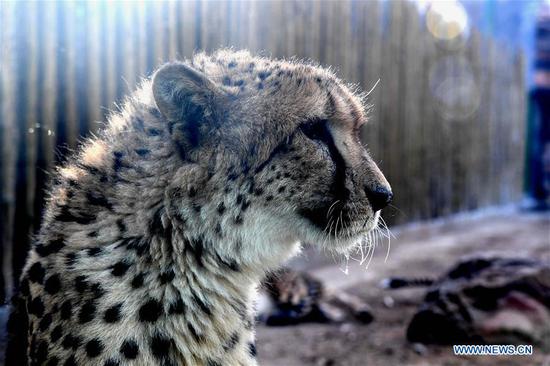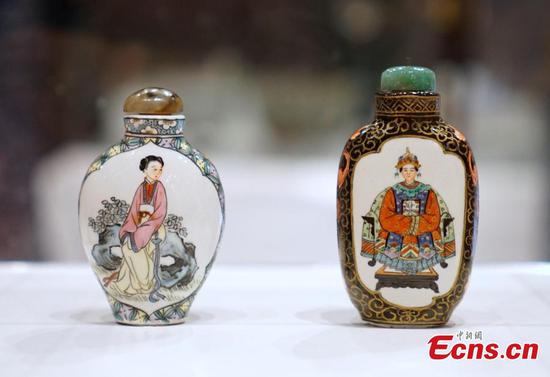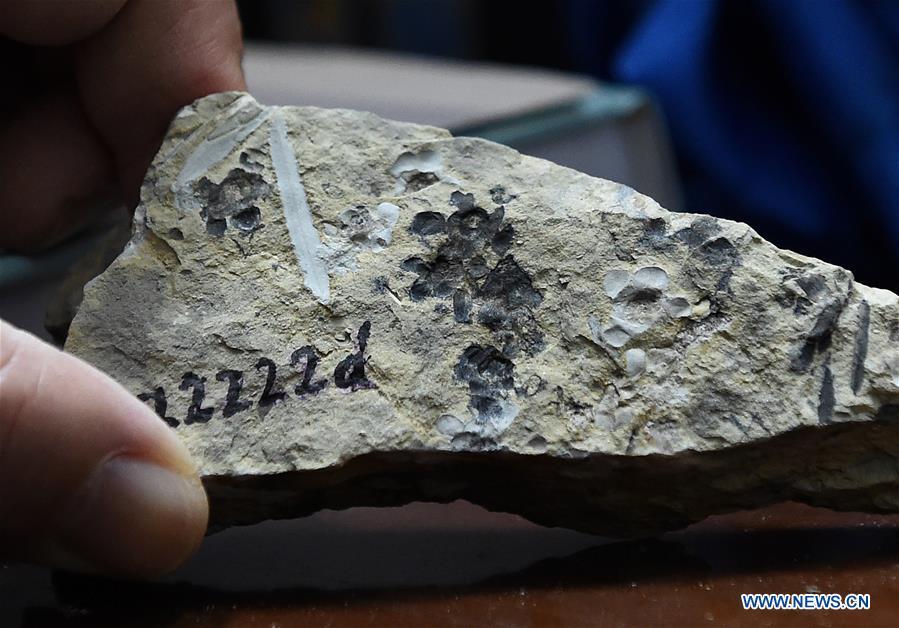
A researcher shows the flower fossils at Nanjing Institute of Geology and Palaeontology in Nanjing, east China's Jiangsu Province, Dec. 18, 2018. Scientists have found new evidence of the world's earliest fossil flower from specimens unearthed in the eastern China city of Nanjing, dating the origin of flowering plants to 174 million years ago, or the Early Jurassic. An international research team led by scientists from the Nanjing Institute of Geology and Palaeontology has made an observation of the specimens, which contain 198 individual flowers preserved on 34 slabs. They named the flower, which has four to five petals and looks like modern plum blossom, Nanjinganthus. The research pushed the origin of flowering plants 50 million years earlier than the record of previously available fossils, which suggested flowering plants appeared about 125 million years ago in the Cretaceous, an era during which many insects such as bees appeared. The Early Jurassic is known as the period that saw dinosaurs dominating the planet. The discovery reshapes the current understanding of the evolution of flowers. (Xinhua/Sun Can)
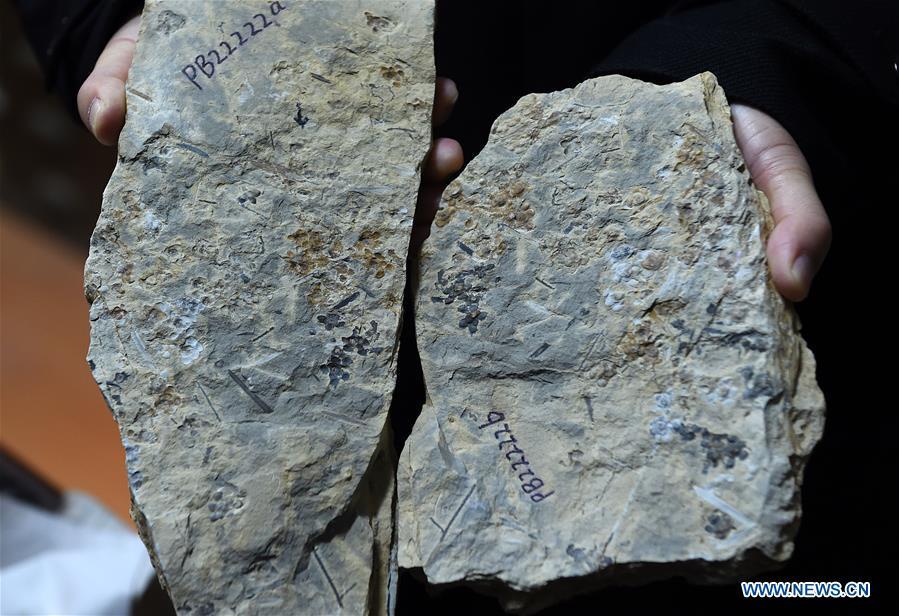
A researcher shows the flower fossils at Nanjing Institute of Geology and Palaeontology in Nanjing, east China's Jiangsu Province, Dec. 18, 2018. Scientists have found new evidence of the world's earliest fossil flower from specimens unearthed in the eastern China city of Nanjing, dating the origin of flowering plants to 174 million years ago, or the Early Jurassic. An international research team led by scientists from the Nanjing Institute of Geology and Palaeontology has made an observation of the specimens, which contain 198 individual flowers preserved on 34 slabs. They named the flower, which has four to five petals and looks like modern plum blossom, Nanjinganthus. The research pushed the origin of flowering plants 50 million years earlier than the record of previously available fossils, which suggested flowering plants appeared about 125 million years ago in the Cretaceous, an era during which many insects such as bees appeared. The Early Jurassic is known as the period that saw dinosaurs dominating the planet. The discovery reshapes the current understanding of the evolution of flowers. (Xinhua/Sun Can)
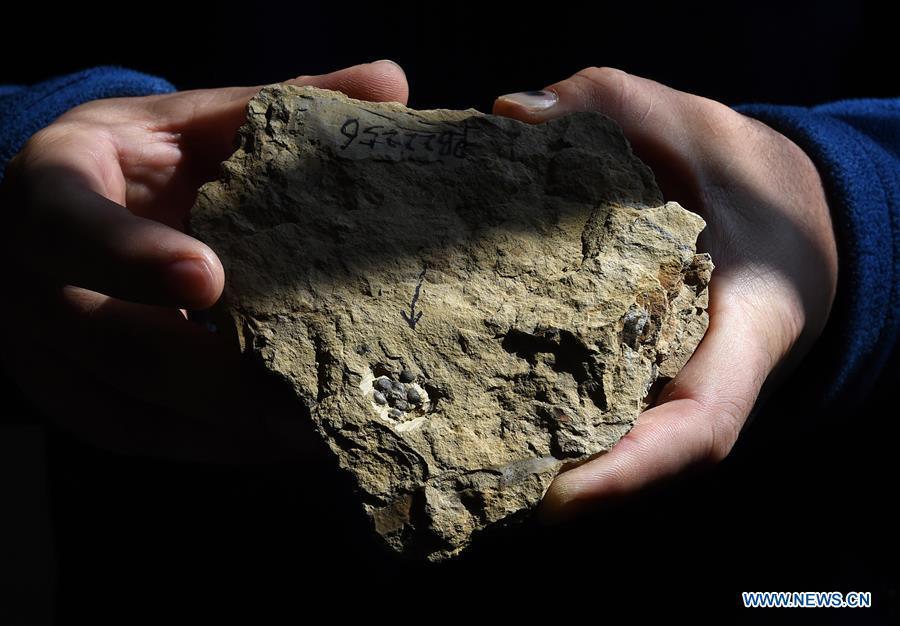
A researcher shows the flower fossils at Nanjing Institute of Geology and Palaeontology in Nanjing, east China's Jiangsu Province, Dec. 18, 2018. Scientists have found new evidence of the world's earliest fossil flower from specimens unearthed in the eastern China city of Nanjing, dating the origin of flowering plants to 174 million years ago, or the Early Jurassic. An international research team led by scientists from the Nanjing Institute of Geology and Palaeontology has made an observation of the specimens, which contain 198 individual flowers preserved on 34 slabs. They named the flower, which has four to five petals and looks like modern plum blossom, Nanjinganthus. The research pushed the origin of flowering plants 50 million years earlier than the record of previously available fossils, which suggested flowering plants appeared about 125 million years ago in the Cretaceous, an era during which many insects such as bees appeared. The Early Jurassic is known as the period that saw dinosaurs dominating the planet. The discovery reshapes the current understanding of the evolution of flowers. (Xinhua/Sun Can)
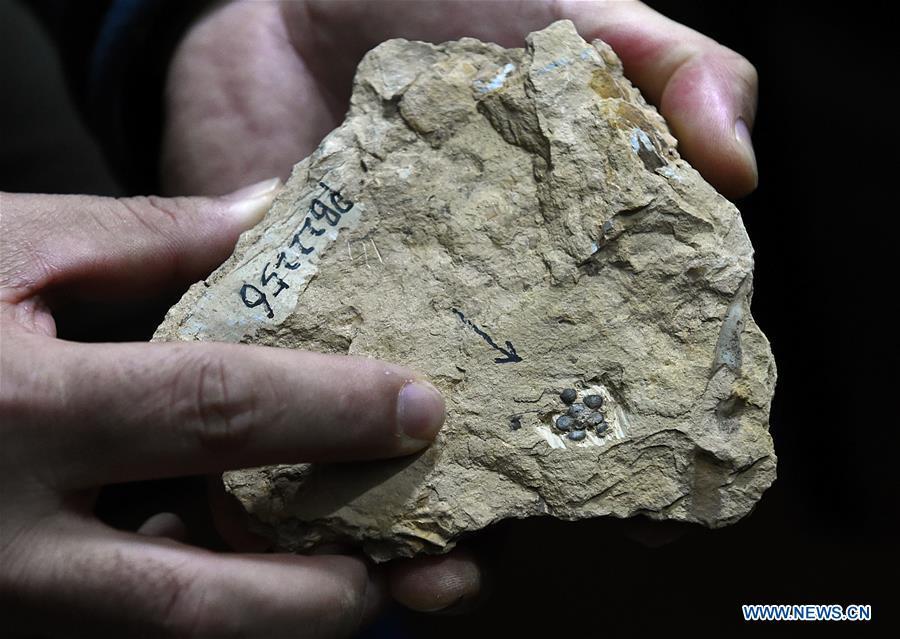
A researcher shows the flower fossils at Nanjing Institute of Geology and Palaeontology in Nanjing, east China's Jiangsu Province, Dec. 18, 2018. Scientists have found new evidence of the world's earliest fossil flower from specimens unearthed in the eastern China city of Nanjing, dating the origin of flowering plants to 174 million years ago, or the Early Jurassic. An international research team led by scientists from the Nanjing Institute of Geology and Palaeontology has made an observation of the specimens, which contain 198 individual flowers preserved on 34 slabs. They named the flower, which has four to five petals and looks like modern plum blossom, Nanjinganthus. The research pushed the origin of flowering plants 50 million years earlier than the record of previously available fossils, which suggested flowering plants appeared about 125 million years ago in the Cretaceous, an era during which many insects such as bees appeared. The Early Jurassic is known as the period that saw dinosaurs dominating the planet. The discovery reshapes the current understanding of the evolution of flowers. (Xinhua/Sun Can)
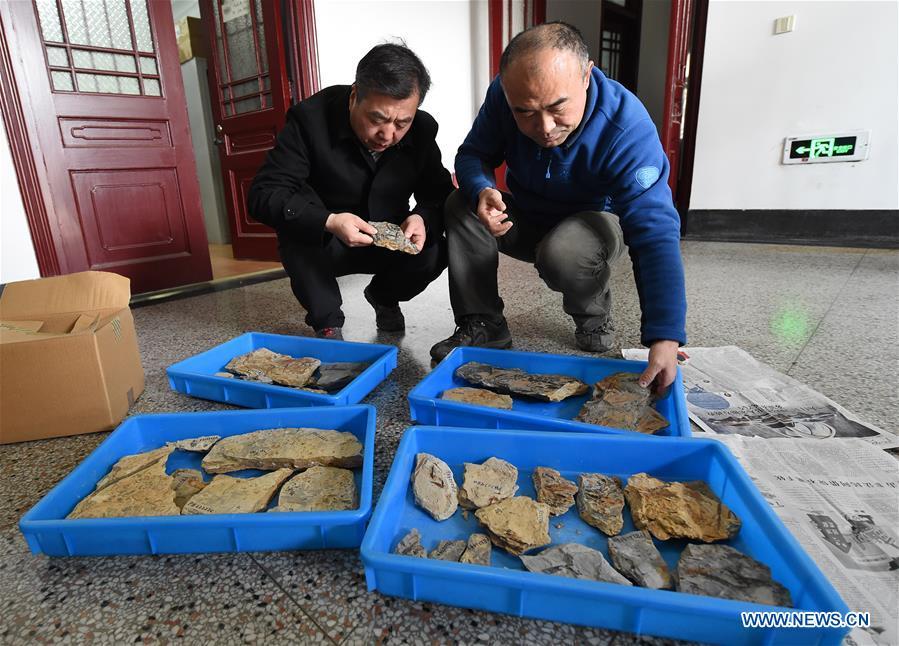
Researchers Wang Xin (L) and Fu Qiang arrange the flower fossils Nanjing Institute of Geology and Palaeontology in Nanjing, east China's Jiangsu Province, Dec. 18, 2018. Scientists have found new evidence of the world's earliest fossil flower from specimens unearthed in the eastern China city of Nanjing, dating the origin of flowering plants to 174 million years ago, or the Early Jurassic. An international research team led by scientists from the Nanjing Institute of Geology and Palaeontology has made an observation of the specimens, which contain 198 individual flowers preserved on 34 slabs. They named the flower, which has four to five petals and looks like modern plum blossom, Nanjinganthus. The research pushed the origin of flowering plants 50 million years earlier than the record of previously available fossils, which suggested flowering plants appeared about 125 million years ago in the Cretaceous, an era during which many insects such as bees appeared. The Early Jurassic is known as the period that saw dinosaurs dominating the planet. The discovery reshapes the current understanding of the evolution of flowers. (Xinhua/Sun Can)
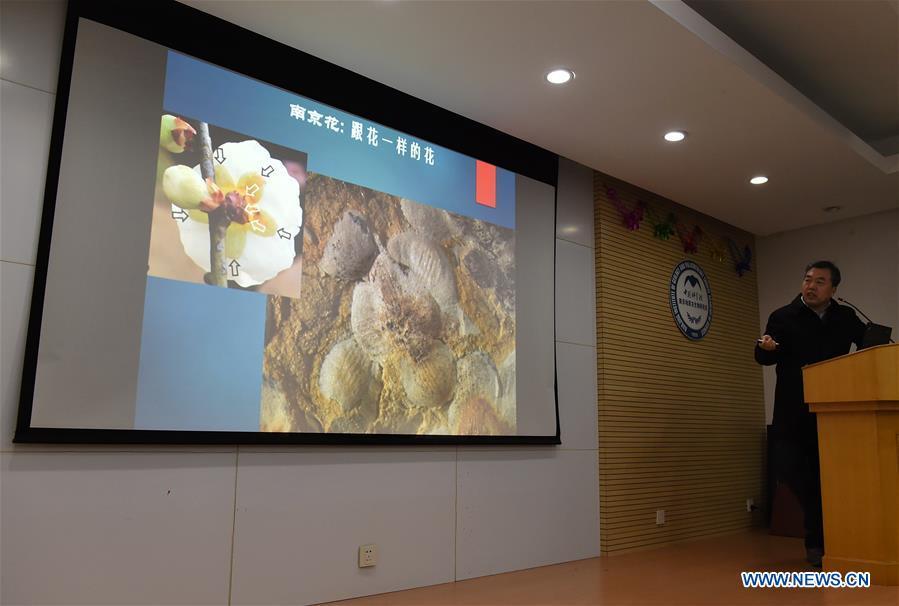
Researcher Wang Xin compares the fossil flower with the current flower at a press conference at Nanjing Institute of Geology and Palaeontology in Nanjing, east China's Jiangsu Province, Dec. 18, 2018. Scientists have found new evidence of the world's earliest fossil flower from specimens unearthed in the eastern China city of Nanjing, dating the origin of flowering plants to 174 million years ago, or the Early Jurassic. An international research team led by scientists from the Nanjing Institute of Geology and Palaeontology has made an observation of the specimens, which contain 198 individual flowers preserved on 34 slabs. They named the flower, which has four to five petals and looks like modern plum blossom, Nanjinganthus. The research pushed the origin of flowering plants 50 million years earlier than the record of previously available fossils, which suggested flowering plants appeared about 125 million years ago in the Cretaceous, an era during which many insects such as bees appeared. The Early Jurassic is known as the period that saw dinosaurs dominating the planet. The discovery reshapes the current understanding of the evolution of flowers. (Xinhua/Sun Can)
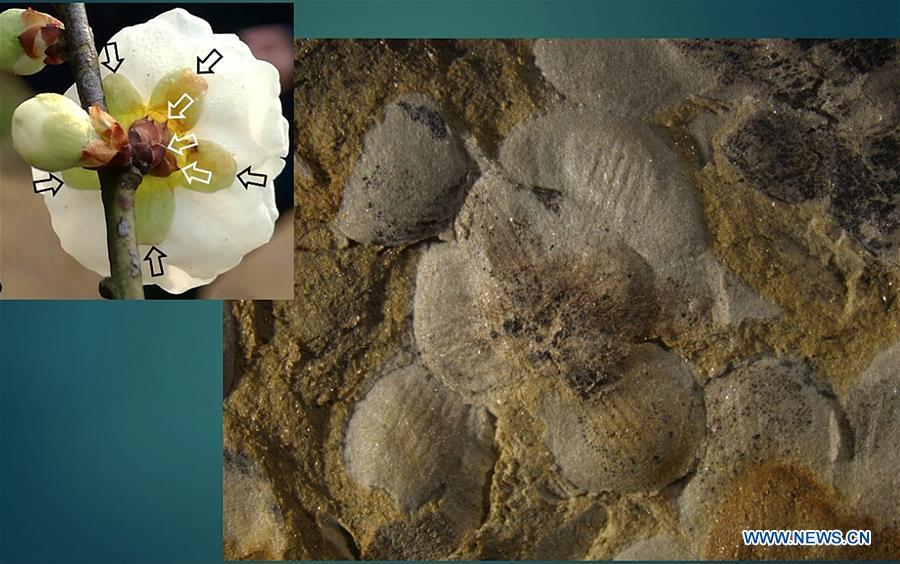
Fossil flowers are compared with the current flowers at Nanjing Institute of Geology and Palaeontology in Nanjing, east China's Jiangsu Province, Dec. 18, 2018. Scientists have found new evidence of the world's earliest fossil flower from specimens unearthed in the eastern China city of Nanjing, dating the origin of flowering plants to 174 million years ago, or the Early Jurassic. An international research team led by scientists from the Nanjing Institute of Geology and Palaeontology has made an observation of the specimens, which contain 198 individual flowers preserved on 34 slabs. They named the flower, which has four to five petals and looks like modern plum blossom, Nanjinganthus. The research pushed the origin of flowering plants 50 million years earlier than the record of previously available fossils, which suggested flowering plants appeared about 125 million years ago in the Cretaceous, an era during which many insects such as bees appeared. The Early Jurassic is known as the period that saw dinosaurs dominating the planet. The discovery reshapes the current understanding of the evolution of flowers. (Xinhua/Sun Can)
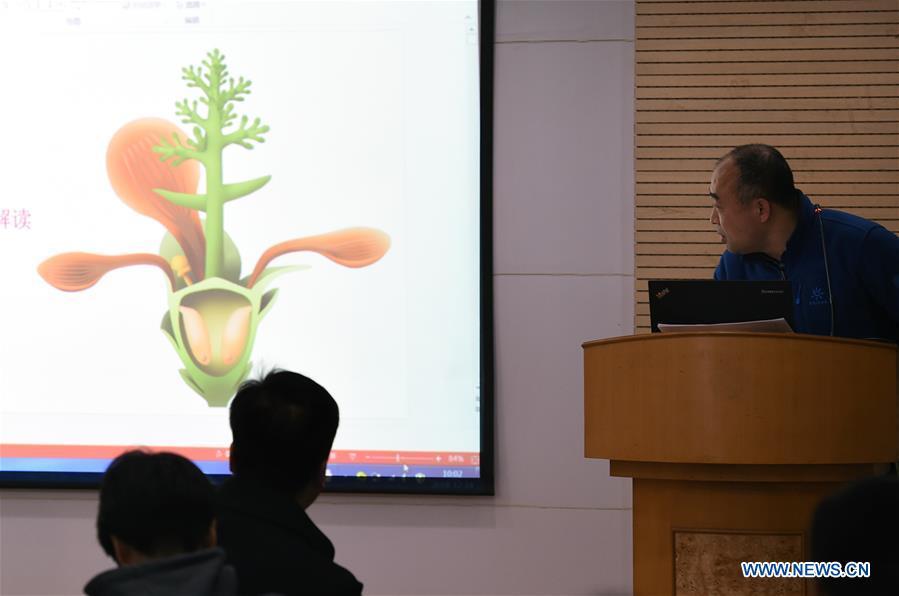
Fu Qiang, a researcher at Nanjing Institute of Geology and Palaeontology, shows the restored picture of the fossil flower at a press conference at the institute in Nanjing, east China's Jiangsu Province, Dec. 18, 2018. Scientists have found new evidence of the world's earliest fossil flower from specimens unearthed in the eastern China city of Nanjing, dating the origin of flowering plants to 174 million years ago, or the Early Jurassic. An international research team led by scientists from the Nanjing Institute of Geology and Palaeontology has made an observation of the specimens, which contain 198 individual flowers preserved on 34 slabs. They named the flower, which has four to five petals and looks like modern plum blossom, Nanjinganthus. The research pushed the origin of flowering plants 50 million years earlier than the record of previously available fossils, which suggested flowering plants appeared about 125 million years ago in the Cretaceous, an era during which many insects such as bees appeared. The Early Jurassic is known as the period that saw dinosaurs dominating the planet. The discovery reshapes the current understanding of the evolution of flowers. (Xinhua/Sun Can)
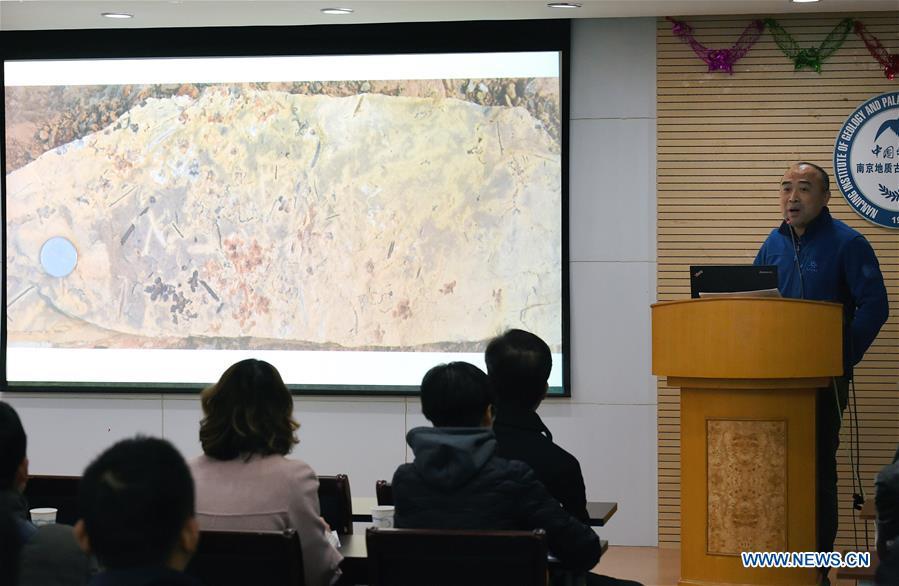
Fu Qiang, a researcher at Nanjing Institute of Geology and Palaeontology, introduces the excavation of the fossil flowers at Nanjing Institute of Geology and Palaeontology in Nanjing, east China's Jiangsu Province, Dec. 18, 2018. Scientists have found new evidence of the world's earliest fossil flower from specimens unearthed in the eastern China city of Nanjing, dating the origin of flowering plants to 174 million years ago, or the Early Jurassic. An international research team led by scientists from the Nanjing Institute of Geology and Palaeontology has made an observation of the specimens, which contain 198 individual flowers preserved on 34 slabs. They named the flower, which has four to five petals and looks like modern plum blossom, Nanjinganthus. The research pushed the origin of flowering plants 50 million years earlier than the record of previously available fossils, which suggested flowering plants appeared about 125 million years ago in the Cretaceous, an era during which many insects such as bees appeared. The Early Jurassic is known as the period that saw dinosaurs dominating the planet. The discovery reshapes the current understanding of the evolution of flowers. (Xinhua/Sun Can)












